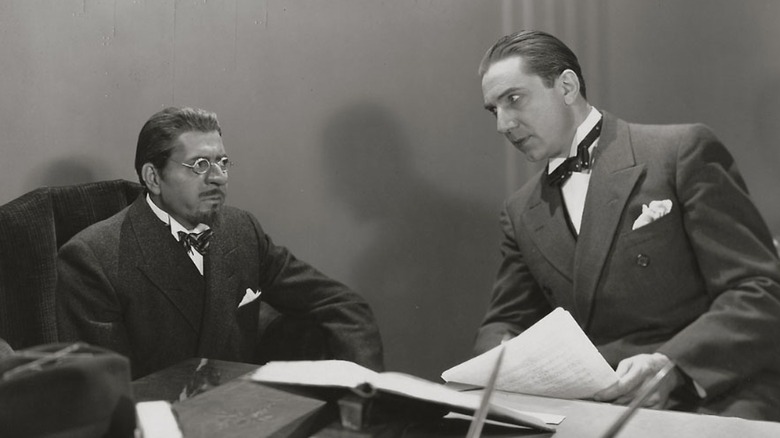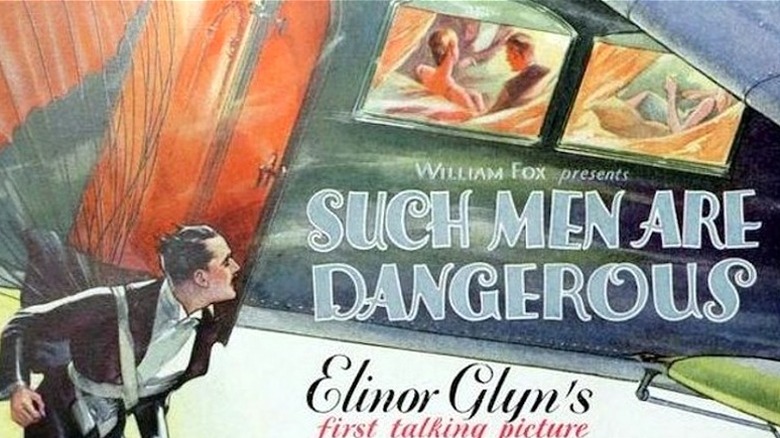Bela Lugosi's First Film With Fox Was The Site Of An On-Set Tragedy
Bela Lugosi remains one of early cinema's most recognizable stars, a larger-than-life figure whose path from inter-war Hungary to post-talkie Hollywood paints a fascinating portrait of an outsider who became part of one of the most tumultuous eras in the American film industry. Unfortunately, that included bearing witness to one of the deadliest disasters in filmmaking history, the airplane collision on the set of the 1930 Fox film "Such Men Are Dangerous."
Lugosi is most famous for portraying Count Dracula, a role that became the standard for the character, but the actor appeared all across Hollywood commonly typecast as a mysterious, often villainous foreigner, much to his dismay. Fox Film, the predecessor to 20th Century Fox, seemed to offer him more opportunities to branch out, at least compared to Universal Pictures, who insisted on making him the literal poster child of their horror movies. Lugosi's first feature for Fox was the silent drama "The Veiled Woman," but "Such Men Are Dangerous" marks his talkie debut for the studio. The accident that occurred didn't involve Lugosi, whose role as a German plastic surgeon came with a gentleness that was a welcome change of pace for the actor, even if the character was restricted to a single scene. Lugosi's appearance was, in fact, the follow-up to the infamous plane crash scene, in which the main character, played by Warner Baxter, fakes his own death in a plane crash. Tragically, the stunt led to an all-too-real crash.
Such stunts are dangerous
In a dangerously elaborate maneuver that's a grim reminder of the importance of safety regulations on film sets, manned cameras set up on two Detroiter planes were supposed to capture the aerial performance from Baxter's stuntman stand-in Jacob Triebwasser. The film's director, Kenneth Hawkes, was among the men on one of the aircrafts. Alongside him were assistant director Max Gold, two cameramen, two assistant cameramen, two prop handlers, and the pilots flying the two planes. All perished in an accident that the third plane, which held Triebwasser and the traumatized racing pilot Roscoe Turner, avoided. In a detail that's a dark parallel to the film's story, eyewitnesses reported that two men failed to parachute out before the plane hit the water.
A coroner found that there was no planned conspiracy of ill will or mechanical malfunction, and that the pilots had experience flying planes for film productions. Rather, the glare of the sunlight reflecting off the water created a perfect storm of blinding and disorienting visibility that caused the collision when the planes turned towards each other at the same time. The scene was the last of the film to be shot and "Such Men Are Dangerous" premiered shortly after the tragedy. Although the papers reported on the incident, the release was met with little controversy compared to the on-set deaths that happen today. In a bold move for Fox, one of the posters for the film depicted the centerpiece parachuting scene that led to the accident. Lugosi, despite directly avoiding the misfortune and receiving acclaim for his performance, never quite moved on from being typecast as a creepy bad guy, but remained a sideline player in early Hollywood's darker instances.

